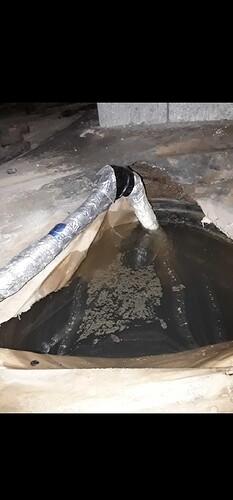Hello, I recently did an inspection on this manufactured home and noticed that the main shutoff valve for the well was in a crock in the crawlspace. The crock was completey full of water and the shutoff valve was about 1ft under the water. To me this does not appear ok being that the line coming from the well could have be leaking or it is ground water filling the crock. Any insight on how to report this would be greatly appreciated.
I would write up that the shut-off valve was located in the crawlspace and was not easily accessible in the event of an emergency.
I would write up the crock was full of water indicating a potential leak with the well and or pump system.
If it is ground water in the crock due to high water levels, and there was also evidence of water or moisture issues in other areas, I would write that up as such.
I would also write up that there was no cover for the crock, that is if there indeed wasn’t one.
^^^^^^Yep, what Kevin said^^^^^^
A “crock” would be an unusual term in my area. For me, a crock is earthen cookware. Are there many others who would use this term? It it regional?
Crock is a funky term that I too think of as an earthen material.
Have used the term myself but often add or change out for basin as 99% of the time the actual “container” found is metal or plastic.
I’m about 2 hours from Scott and CROCK is used often for: vessel, container, receptacle, etc. Different areas, I guess… ![]()
![]()
I have never used the term “crock” except for chili day ![]() Or when my buddy telling me a load BS.
Or when my buddy telling me a load BS.
I Learn something everyday!
Oh, that’s still used around here, too. LOL!
If you put the earthenware crock in the ground and put a sump pump in it, is it not still a crock?
Yep!
(Ten characters)
The term crock is common here for what is in the picture…
Here it’s called a sump pit
The sump pit (also known as sump, sump basin, or sump well) is a water collection hole in the floor of your basement or crawlspace .
In many states I have inspected in, more often than not, the same situation was observed beneath Mobil/Manufactured homes that DID NOT have a foundation wall (only skirting). In every such case, the “hole” was simply a depression in the soil without a formal “Crock/Basin/Well/Pit Liner/etc”. When I questioned an install crew about the ‘common’ detail, I was told it allows the in-ground connection to be covered with lumber for protection when delivering the home to the site footprint, if not being placed by crane on a foundation. Quite often these holes contained water from runoff from rain and nothing quite so sinister as an in-ground leak which would cause much more damage than filling a hole with water.
This is my narrative when the water meter box is full of water (similar to this situation). Something I see often.
A water filled utility box may indicate a possible water supply leak, however there are several other possibilities such as recent rains, irrigation run-off or ground water; therefore I was unable to make this determination. Recommend monitor for excessive water usage and evaluate by a qualified plumbing contractor as needed.
Thank you for all the input! I
